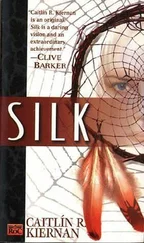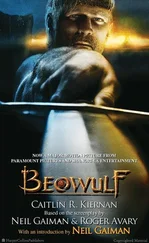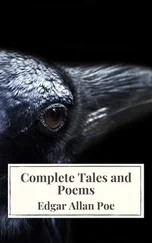Caitlin R. Kiernan - The Red Tree
Здесь есть возможность читать онлайн «Caitlin R. Kiernan - The Red Tree» весь текст электронной книги совершенно бесплатно (целиком полную версию без сокращений). В некоторых случаях можно слушать аудио, скачать через торрент в формате fb2 и присутствует краткое содержание. Жанр: Ужасы и Мистика, на английском языке. Описание произведения, (предисловие) а так же отзывы посетителей доступны на портале библиотеки ЛибКат.
- Название:The Red Tree
- Автор:
- Жанр:
- Год:неизвестен
- ISBN:нет данных
- Рейтинг книги:3 / 5. Голосов: 1
-
Избранное:Добавить в избранное
- Отзывы:
-
Ваша оценка:
- 60
- 1
- 2
- 3
- 4
- 5
The Red Tree: краткое содержание, описание и аннотация
Предлагаем к чтению аннотацию, описание, краткое содержание или предисловие (зависит от того, что написал сам автор книги «The Red Tree»). Если вы не нашли необходимую информацию о книге — напишите в комментариях, мы постараемся отыскать её.
The Red Tree — читать онлайн бесплатно полную книгу (весь текст) целиком
Ниже представлен текст книги, разбитый по страницам. Система сохранения места последней прочитанной страницы, позволяет с удобством читать онлайн бесплатно книгу «The Red Tree», без необходимости каждый раз заново искать на чём Вы остановились. Поставьте закладку, и сможете в любой момент перейти на страницу, на которой закончили чтение.
Интервал:
Закладка:
It’s really not so bad in the attic, aside from the heat, which was almost intolerable before we set up a little window-unit air conditioner that the Mexicans seem to have left behind. But it’s clean up there, and roomier than I remembered, and Constance seems happy enough with the space. I sat with her a while, and we talked and drank more Narragansett beer while the attic cooled down around us. I don’t think I could ever get used to that single, long V-shaped room, those steeply slanting walls meeting overhead like the hull of a capsized boat. Nothing very remarkable about the conversation, nothing worth putting down here, except that she claims she’s bi, that she’s had a couple of girlfriends, so maybe. well. I can’t be blamed for wishful thinking. Sure, I was already thirteen when she was born, but what the hell.
Later, she wanted to take a nap, and so I found myself downstairs again, looking over Dr. Harvey’s manuscript for the umpteenth time. Not so much reading it, as scanning what I’d read already. To be honest, the thing is a mess. There are chapters, but after the first, these divisions seem more or less arbitrary, and there’s almost no effort at presenting any sort of chronological history of the origin and traditions surrounding “the Red Tree” (it would be too kind to call this writing “non-linear”). Also, often, the author veers off into subjects that are, at best, tangential. The nearest thing I can compare it with are the writings of Charles Fort — which, I should note, are mentioned on that page I discovered in the typewriter’s carriage, and are also liberally cited in other portions of the manuscript. I haven’t read Fort since college, but I recall his rambling, unfocused style gave me fits. Anyway, here’s an example of what I mean — the tangents — from Chapter Two (ms. pg. 112). Right in the middle of a discussion of one of the better-documented episodes involving the tree, a series of murders dating from the 1920s, Harvey pauses to discuss an unrelated haunting:
Here I should like to mention the purported haunting at Portsmouth Abbey, which is said to have followed from the slaghter [sic] and mass burial of some thirty to sixty Hessian soldiers during the Revolutionary War. The largest land-based battle of the conflict occurred on August 29, 1778, at Portsmouth, Rhode Island, near a stream now known as Barker’s Bloody Brook (or the Bloody Run), a stream that flows through the Portsmouth Abbey grounds. Indeed, the very name of the brook is tied to this battle, as the waters were said to have run red for days afterwards, polluted by blood, so great was the loss of life. The precise location of the Hessian burial is uncertain, though most do agree it was beneath the boughs of a large willow tree, long ago cut down. The dead soldiers are said to rise from a great depression marking the grave site, often referred to as the “Hessian Hole” (again, reports vary on the location of this sunken area marking the grave). Spectral sightings are said to be especially likely on foggy nights. One wonders if director Tim Burton was aware of this tale when crafting his popular 1999 retelling of Washington Irving’s “The Legend of Sleepy Hollow” (1820). It should be noted that there is no actual archaeological evidence that the mass grave is anything more than legend, and a recent survey of much of the battleground by Salve Regina University (Newport) failed to turn up any burial matching the description of the infamous “Hessian Hole.”
I will assume Harvey felt justified in making this digression from his discussion of the murders of 1922–1925 because the Hessian Hole story involves a tree and a bloody brook, vaguely echoing some elements of the “Red Tree of Barbs Hill Road.” Anyway, I realized that I wasn’t really sure how far back the legends surrounding the tree extend — because of Harvey’s haphazard attention to chronology — only that the oldest accounts predate the story of William Ames and his wife by more than a century. I sat down on the floor with the manuscript, and spread the pages out around me, trying not to think about Constance upstairs, napping beneath the air conditioner while I sweated below. Or the possibility that she might be napping in the nude. It would appear that the earliest account Harvey was able to locate regarding something amiss with a tree in the wilderness south of Moosup Valley dates to the years following the “West Quanaug purchase” of 1662 (and I confess that I am almost entirely ignorant of local history, so I’m taking Harvey’s word on this stuff). He writes (Chapter One, ms. pg. 29):
It seems to have begun in the decades after the acquisition of roughly fifteen square miles of land from the Narragansett sachems Awashouse and Newecome, generally referred to as the West Quanaug purchase. “West Quanaug” (or, alternately, “Westconnaug” is an English corruption of the Narragansett “Wishquat noqke”). Three men were instrumental in the purchase: William Vaughn of Newport, Robert Westcott of Warwick, and Zachariah Rhodes of Pawtuxet. The Westconnaug Company was organized in June 1678 to see to the tract’s subsequent apportion. A surveyor was not appointed until 1707. The West Quanaug purchase may be seen as the second major acquisition in an expansion authorized in 1659 by the Colonial General Assembly, encouraging Providence settlers to “buy out and clear off” all Indians west of the Seven-Mile Line. Following the resolution of disputes over ownership between the aforementioned Providence Proprietors and the West Quanaug Company (October 28th, 1708), both were eager to place settlers on the new land, largely to help resolve a persistent boundary dispute with Connecticut.
Though the first deed issued by the West Quanaug Company, to John Potter of Warwick, dates from 1714, family tradition has it that Mr. Potter, in fact, took up residence in a small cave along the east bank of the Moosup River as early as 1704, where he then lived until the construction of a house. Though this story may be purely anecdotal, appealing to a romantic ideal of the pioneering spirit, a much later entry in John Potter’s journal (Special Collections, Providence Athenaeum), dated May 15, 1715, makes reference to “the red indyen dread of an olde trees’d haunted by the divel Hobbamock, an enimy to all good, who appeareth there by night.” Potter then relates a story of the Narragansett’s offerings of freshly killed game left at the base of the tree, as Hobbamock was “s’d by the heathens to be appeas’d above al else by the shadding of blood.” In this entry, indulging his imagination, Potter even supposes that occasional human sacrifices may have been made to “the daemon, so great ware theire fear of this malevolent thinge.”
In Part 1 ofThe Origin and Development of Religious Belief(1878), the prolific English scholar and folklorist Reverend Sabine Baring-Gould writes, “New Englanders supposed Hobbamock to be the arch-fiend of the Indians, because the myths told of him represented him as malevolent; but, in fact, he was their Supreme Oki, or God.” So, regardless of Hobbamock’s proper place in the pantheon of the Narragansett people (a redundancy, as “Narragansett” translates, literally, as “The People”), it is consistent with the contemporaneous impression of Native American mythology that John Potter would have regarded (and probably distorted) this being to conform to the popular impression of the time, that Hobbamock was an Indian devil. This same being was also known as Cheepie (chippe, meaning alone, separate, secluded, or apart).
It is also worth mentioning here that “Hobbamock” was a title bestowed upon high-ranking tribal members, such as the case of a Pokanoket sachem called Hobbamock who was sent, in the spring of 1621, to Plymouth Colony by Massasoit, chief of all the Wam panoag. Hobbamock and his family lived alongside the colonists until he died in 1641.
Читать дальшеИнтервал:
Закладка:
Похожие книги на «The Red Tree»
Представляем Вашему вниманию похожие книги на «The Red Tree» списком для выбора. Мы отобрали схожую по названию и смыслу литературу в надежде предоставить читателям больше вариантов отыскать новые, интересные, ещё непрочитанные произведения.
Обсуждение, отзывы о книге «The Red Tree» и просто собственные мнения читателей. Оставьте ваши комментарии, напишите, что Вы думаете о произведении, его смысле или главных героях. Укажите что конкретно понравилось, а что нет, и почему Вы так считаете.












